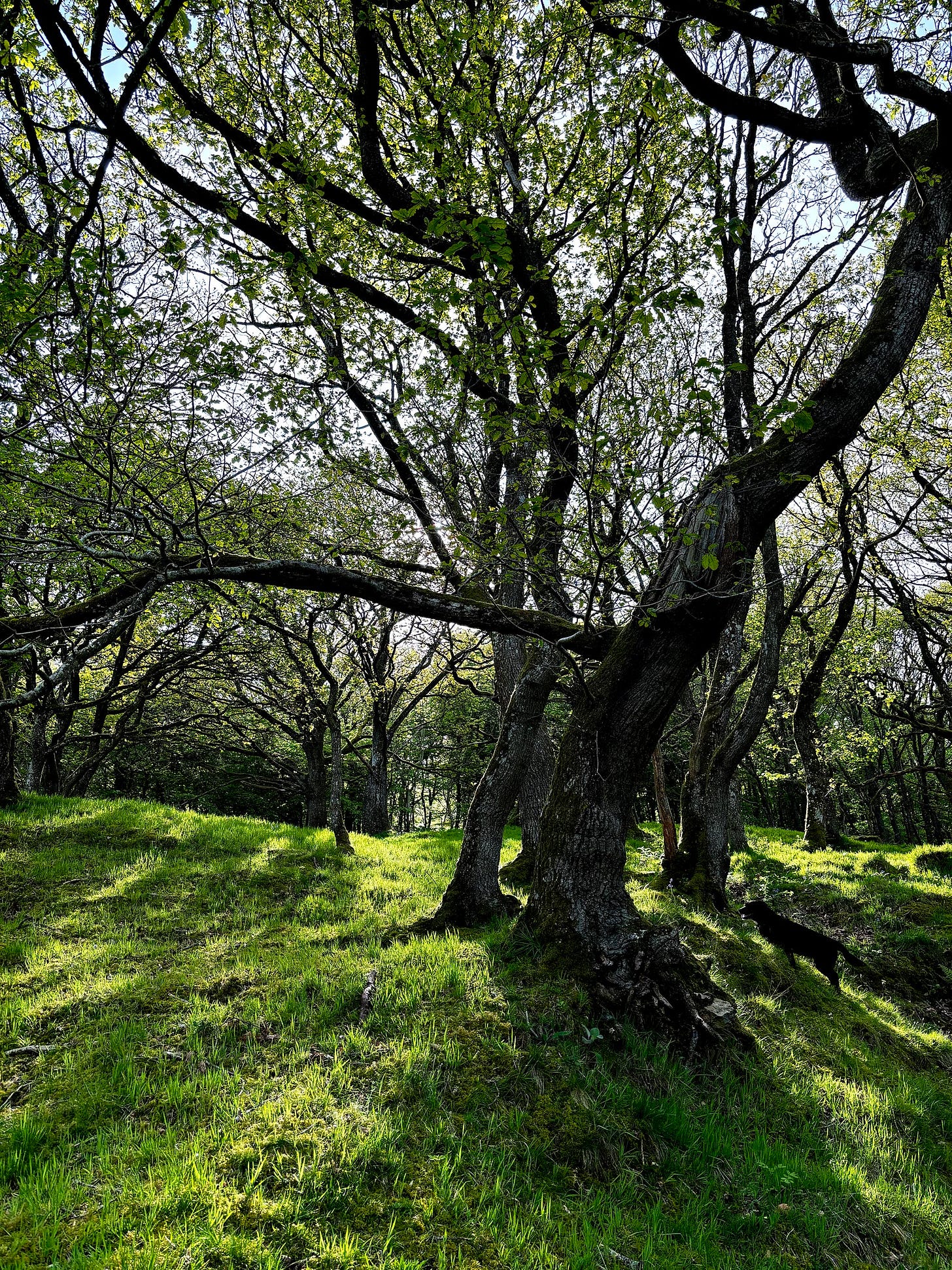Friends,
The above picture was taken in what I believe to be one of the most beautiful places on earth, a tiny island of wild life, which just happens to be only a few miles from where I live. It’s called Worzel Wood, a hidden place, lost in time, a place of the fairies surrounded by the fury of modern life. This week’s story is about speed and deep time, ancient spaces and how we connect to them.
Or, more simply, a walk in the woods . . .
If you’re a listener rather than a reader please scroll to the end of the story for the audio version, complete with relaxing music and the sound of distant thunder.
Hello, I'm James Roberts, artist and writer. Here you can join RIMA subscribers and help me produce books, newsletters, short and long-form essays, podcasts & more.
Subscription supports an expanding collection of public work. Paid subscribers also get exclusive discounts and previews of my artwork, members-only stories, audio and occasional videos.
Are you in? If so you can subscribe or upgrade your subscription below.
I don’t know how I’ve missed this place. Almost every time I go walking I see it. From the summits of Hergest Ridge and Bradnor Hill it’s an oval of woodland, an emerald pool of trees. From Yeld Wood it’s the next hill looking west, rising out of the surrounding fields like an elongated dome. It’s part of the Stanner Hanter Complex, a series of three whaleback hills, the oldest geology in Wales.
There are two paths, one circular tracing the edge of the wood, the other bisecting the circle, going steeply up and over the summit, a calf and thigh burner. The oldest ordnance survey map I can find of the wood is from 1888 and the two paths are marked identically. The place is almost exactly as it was then, the edge of the wood identical, the field patterns, the old cottages and farmhouses, the copse at the base of adjoining Hanter Hill. The only difference I can see is that there was once an orchard surrounding the big farmhouse which is pasture now. Travel a little further west on the A44 into Radnorshire and it couldn’t be more different, hundreds of square miles of sheep ranch-land, every hedge erased, no native woodland, rectangular patches of planted pines high on the hills, factory farms, overgrazed commons, wind turbines. The land of the present.
But this is a place of the past, a wild island amid the erasure. The wild places of this country are always located on islands - on land or at sea.
My dogs are wandering about knee-deep in wild garlic, white flowers spreading up the steep sides of the hill in billows, giving off a kitchen scent. In between are swathes of bluebells, fading now as the beech and oak leaves begin to close the canopy above them. The oaks here twist into the sky. Rocks as old as time are scattered amongst the woody debris, green with moss, silver with lichen. I follow the path beside a brook, beyond it a field of ewes with their young lambs chasing each other in gangs, goat leaping, butting imaginary horns, the wild still in them at this early age. Their mothers doze in the sunshine, glad, I’m sure, of the rest. The sun won’t be out for long. Above the undulating line of the hills there are lead grey clouds, silver lines of rain. I hear the first rumble of thunder.
Keep reading with a 7-day free trial
Subscribe to Into the Deep Woods to keep reading this post and get 7 days of free access to the full post archives.




